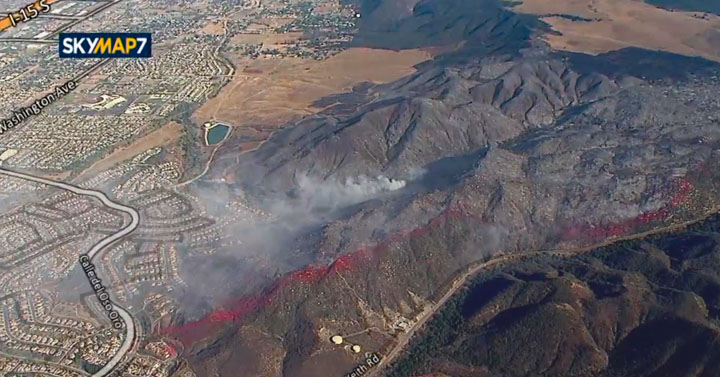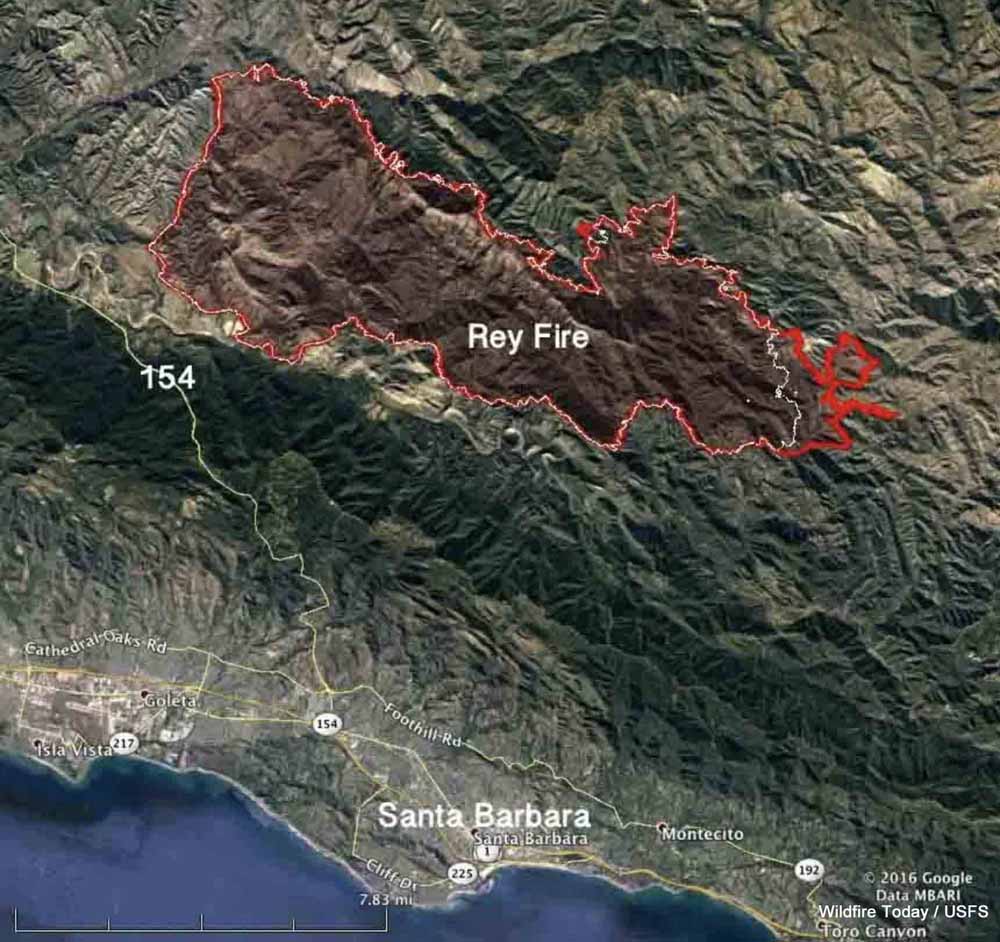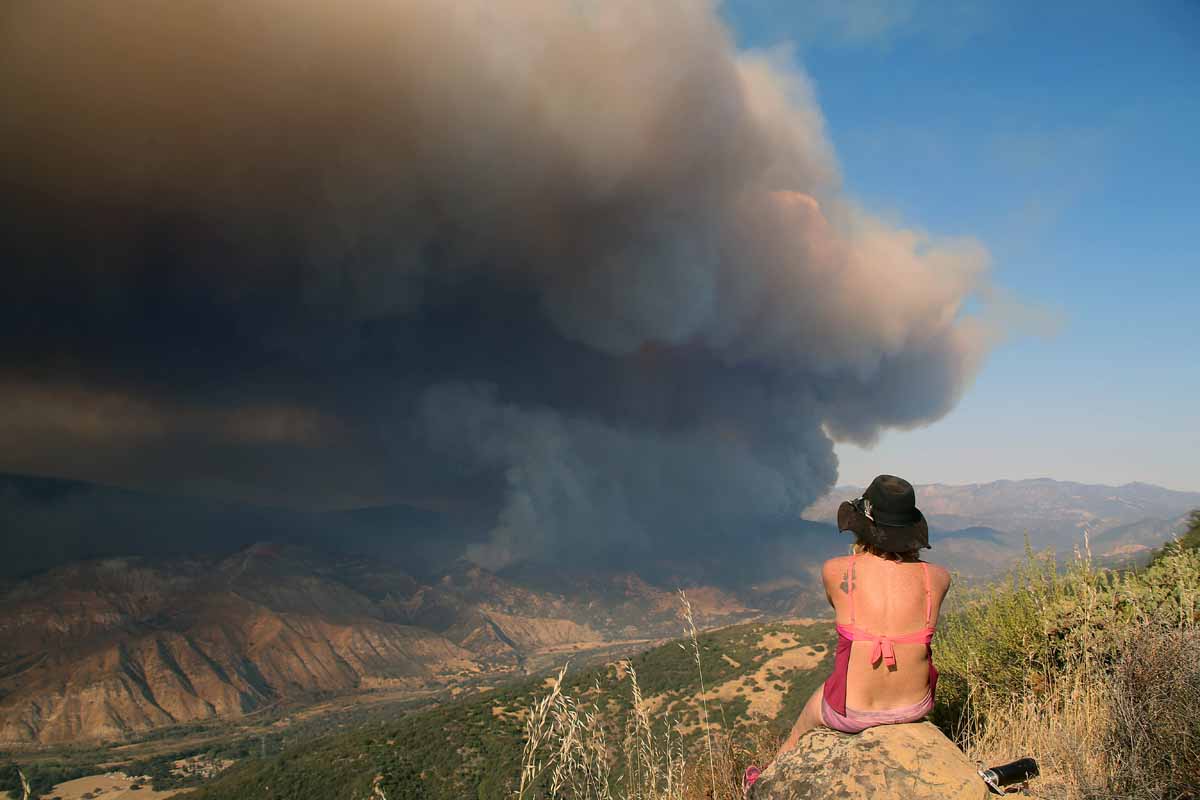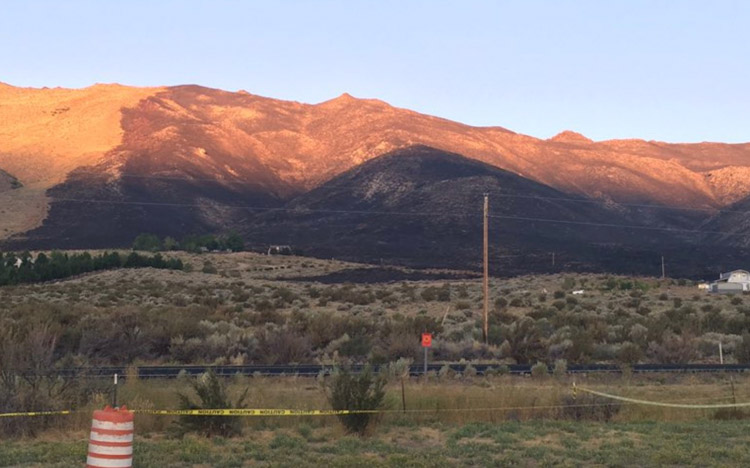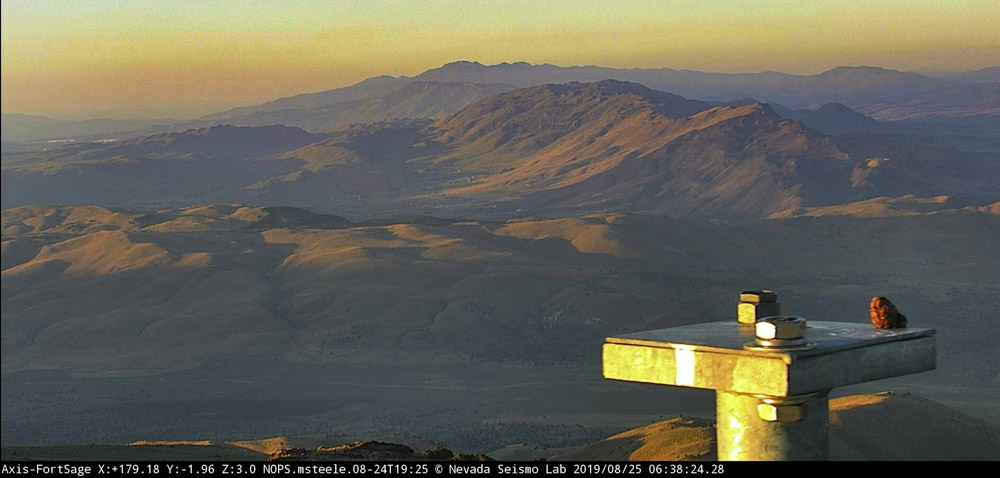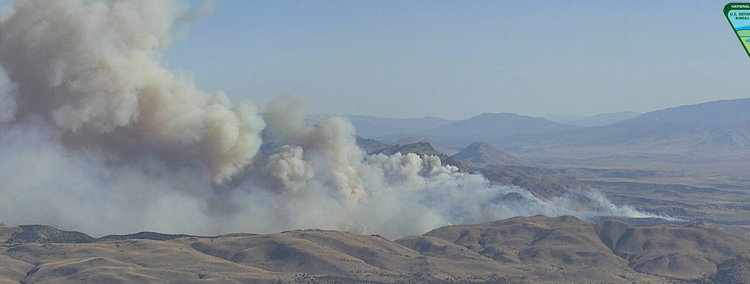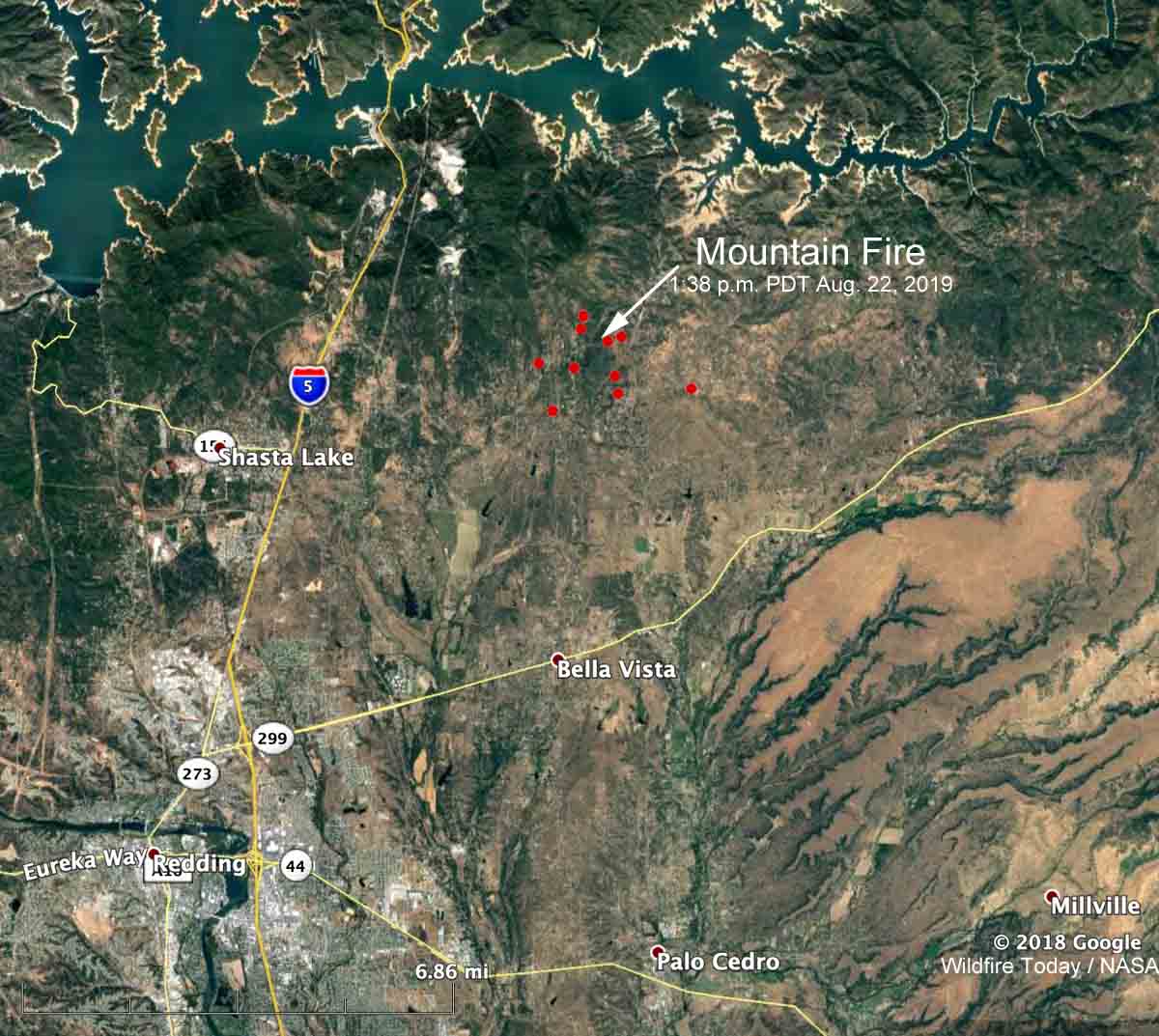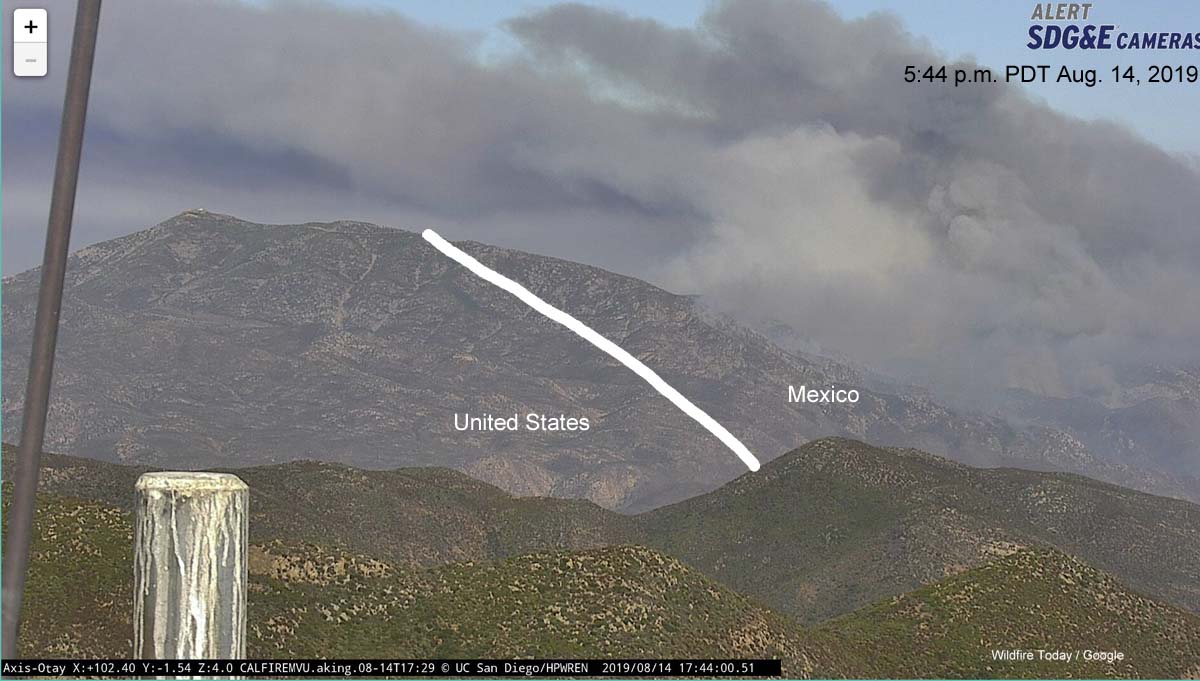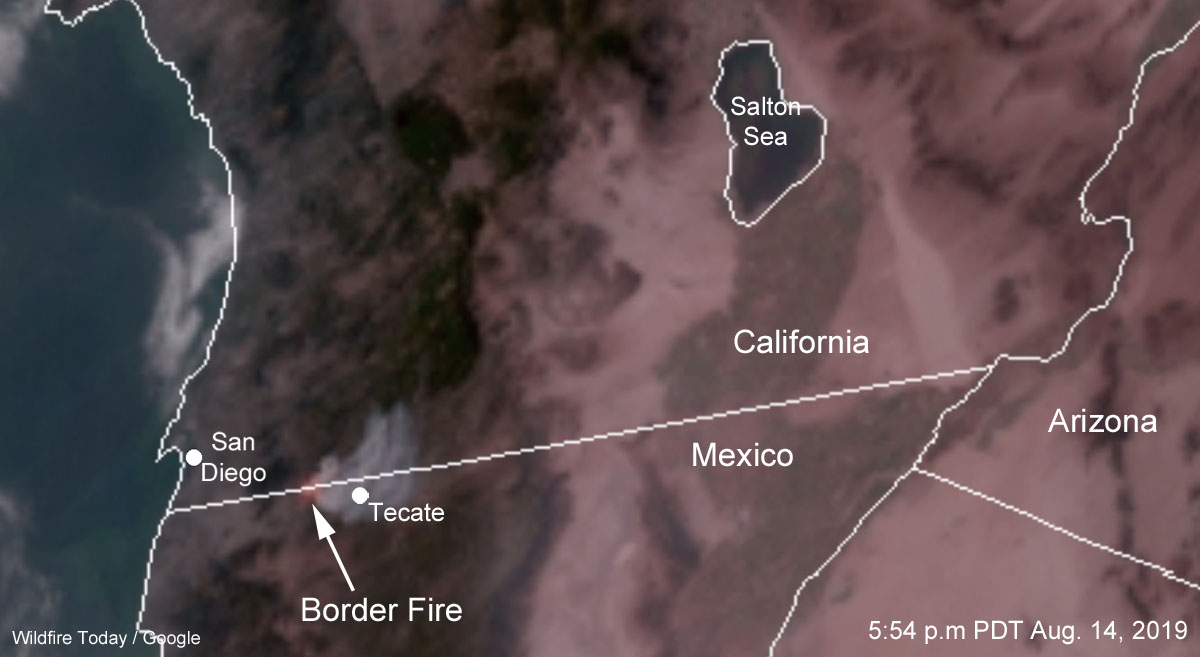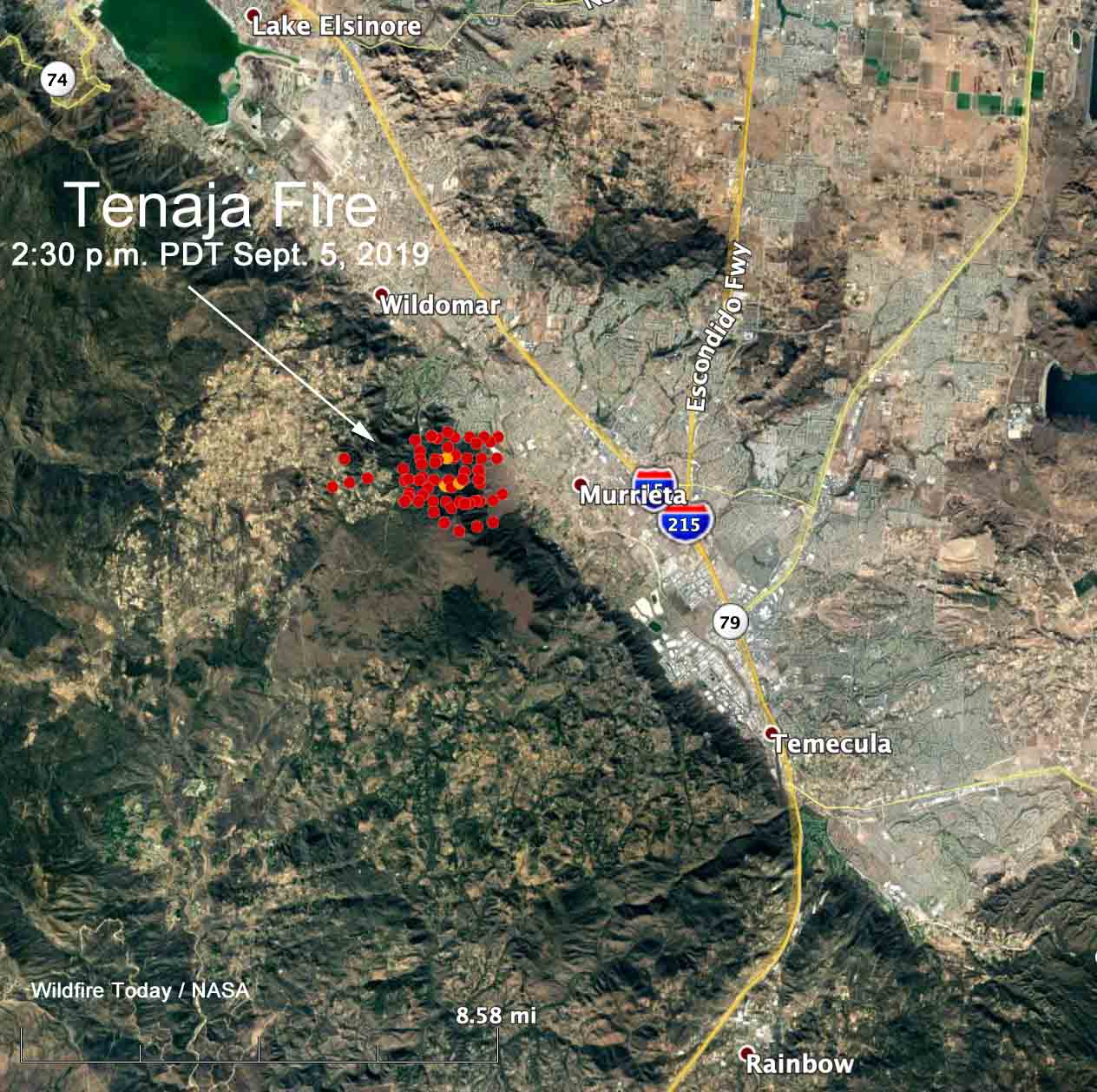
About 24 hours after it was reported at 4 p.m. PDT Wednesday the Tenaja Fire west of Murrieta in Southern California flared up again requiring additional evacuations and commitments of firefighting resources.
The blaze started near the intersection of Tenaja Road and Clinton Keith Road in the La Cresta community. (see map above) Spreading quickly in the high temperatures, thunderstorms played havoc, causing the wind direction to shift causing erratic fire behavior. Air tankers, helicopters, and firefighters on the ground kept it to about 1,400 acres Wednesday night as the rate of spread slowed.
Thursday morning there was still very little containment of the fire perimeter. It was fairly quiet until early afternoon when the activity picked up considerably. Rapid spread toward dense complexes of homes in the Murrieta and Wildomar communities triggered more evacuations and large orders for additional firefighting resources.
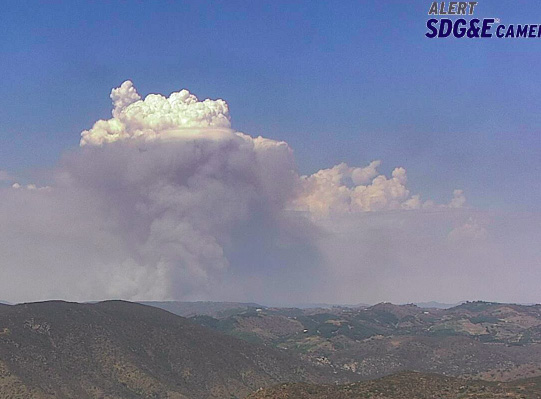
The fire came very close to a number of homes, some of which were painted red by fire retardant drops. Good work by firefighters on the ground and in the air prevented it from moving into residential areas.
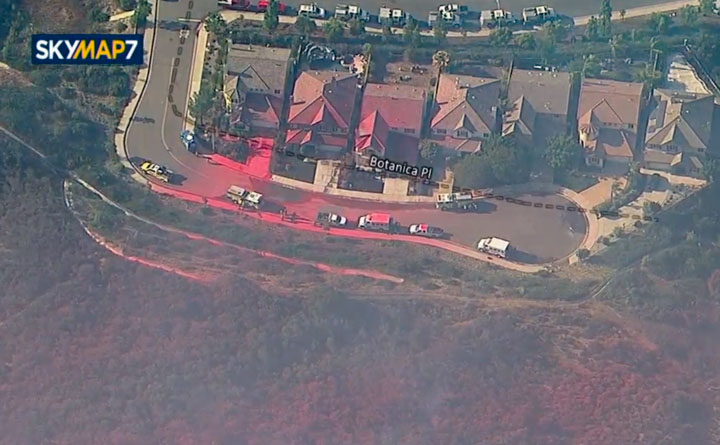
At 5:30 p.m. the spread had been at least temporarily stopped, and in places where there was no fireline the vegetation was red from multiple air tanker drops. Fire officials estimated it had burned 1,974 acres. There were no reports of homes burning.
